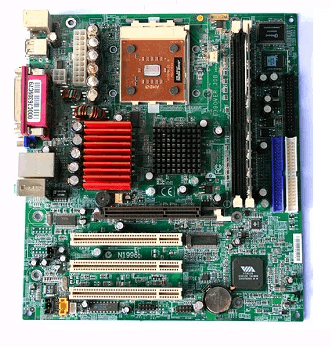What is a Processing Device?
The computer receives input from input devices such as the keyboard, joystick, and scanner; then it goes through an intermediate stage; here, it manipulates the data and sends it to the output devices like the printer and monitor.

The processing device is one of the hardware devices of the computer which processes the data according to the use. The central processing unit(CPU) executes the sequence of instructions given by the user. Processing devices are the main part of controlling, which acts like the brain of a human.
Examples of processing devices are as follows:
The Central processing unit (CPU), Graphical processing unit (GPU), video card, sound card, network card, motherboard, etc.
Different types of processing devices of computers
- Microprocessors
- CPU
- Motherboard
- Random Access Memory
- GPU
GPU (Graphics Processing Unit)
Graphics Processing Unit is one computer-embedded chip that helps render graphics and images by using rapid mathematical calculation. GPU is used in both personal and professional computing. GPU will help in giving 2D and 3D images, animations and video.
GPU will have a high computational speed to enhance machine learning.
GPU improves the performance of video editing and video creation due to the parallel processing of GPU can render high-performance graphic and video. It is also used in bitcoin and cryptocurrency because of its better performance.
Two variants are available in GPU. They are integrated and discrete. An integrated GPU is installed along with the CPU, and a discrete is chipped on the board separate from the CPU board.
Microprocessor
The microprocessor is installed as a single integrated circuit. It is present in the computer and is the heart of the computer. The microprocessor performs all the arithmetic and logical operations when required. It is a control unit of a computer.
Different types of microprocessors are:
- RISK
- CISCO
- Superscalar Microprocessor
- SEND
- Graphic Processors
- Symbolic Processors etc.
RISC: It is an abbreviation for ‘Reduced Instruction Set Computer’. The main motive behind building RISC is to reduce execution time. It must use only one clock cycle to uniformly give the result on execution time. It also needs more RAM to save instructions; due to this, its efficiency is reduced.
CISC: It stands for ‘Complex Instruction Set Computer’. It takes all the complex instructions set, so it takes more time to execute all instructions. These are slower than RISC. CISC's main functions are to download, upload and swap data between the other devices and memory cards that are connected to a computer.
Superscalar Microprocessor: As it contains multiple pipeline’s structure, it can execute huge tasks at a time without delay. It is designed for the ALU and other multipliers.
SIMD: SIMD is an abbreviation for ‘Single Instruction Multiple Data '. It is known as an "Array Processor". The goal of introducing this is to convert all instructions and implement them into vector form. Here in this architecture, every element of the processor uses a couple of ALUs.
Graphic processors: It was introduced by Intel graphic chip, and with these graphic processors, users can enjoy high-definition games and movies.
Symbolic Processors: These processors are also known as “PROLOG processors or LISP processors”. These are introduced for fields like machine intelligence, artificial intelligence, etc. Floating point operations are not used in these symbolic processors.
CPU (Central Processing Unit)
CPU is the essential part of the computer system that performs all kinds of data processing. It manages all computer operations.
CPU contains a memory unit(it stores instructions and passes them to the control unit), a control unit(controls entire operations and helps move instructions), an arithmetic and logic unit(made up of registers and does arithmetic and logical operations), and input/output unit(includes all input and output devices where information is traveled).
CPU receives data for processing from the memory unit and, after completion of instructions, is moved to the memory unit for displaying on the screen. Hence it is an input and output device.
Motherboard
The motherboard is called the "Logic board or Mainboard”. It is the main circuit board of a computer. The motherboard attaches all the essential parts of the computer, which includes CPU, memory, sockets, etc.
The motherboard is of two types they are:
Integrated Motherboard: There is no need for an external expansion card since all ports and connectors are connected in the motherboard. Its advantages include fast speed and cost-effectiveness.
Non-integrated Motherboard: It is present in traditional motherboards. They don't support various connectors: we have to use an expansion board for making connections. The advantage is that it has a lower maintenance cost than an integrated motherboard.
RAM (Random Access Memory)
RAM is the primary memory of the computer. RAM is a volatile memory and cannot retain the data when power is off. The data in RAM can be accessed directly, which reduces time to fetch data; but it is more cost when compared to other kinds of memory.
Mostly a computer comes with 8GB of RAM.
Types of RAM are:
- DRAM (Dynamic Random Access Memory)
- SRAM (Static Random Access Memory)